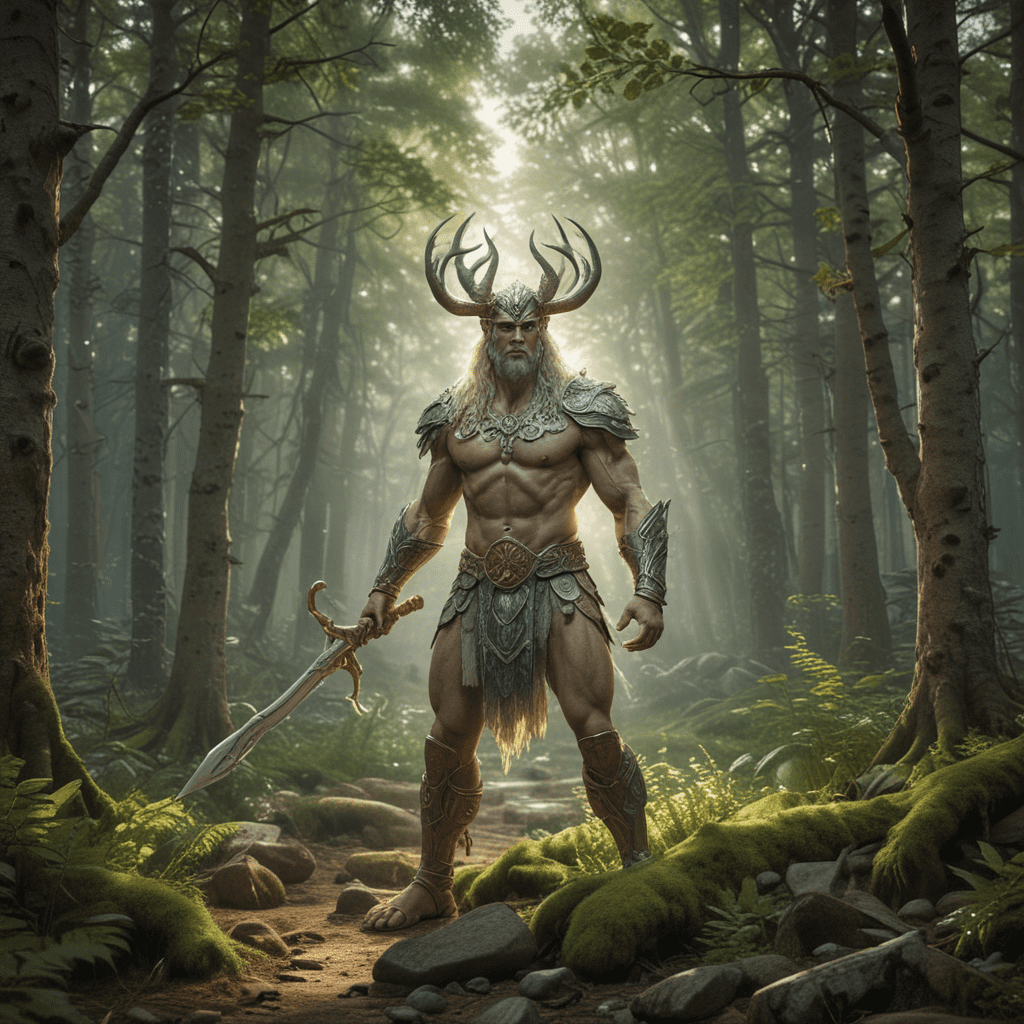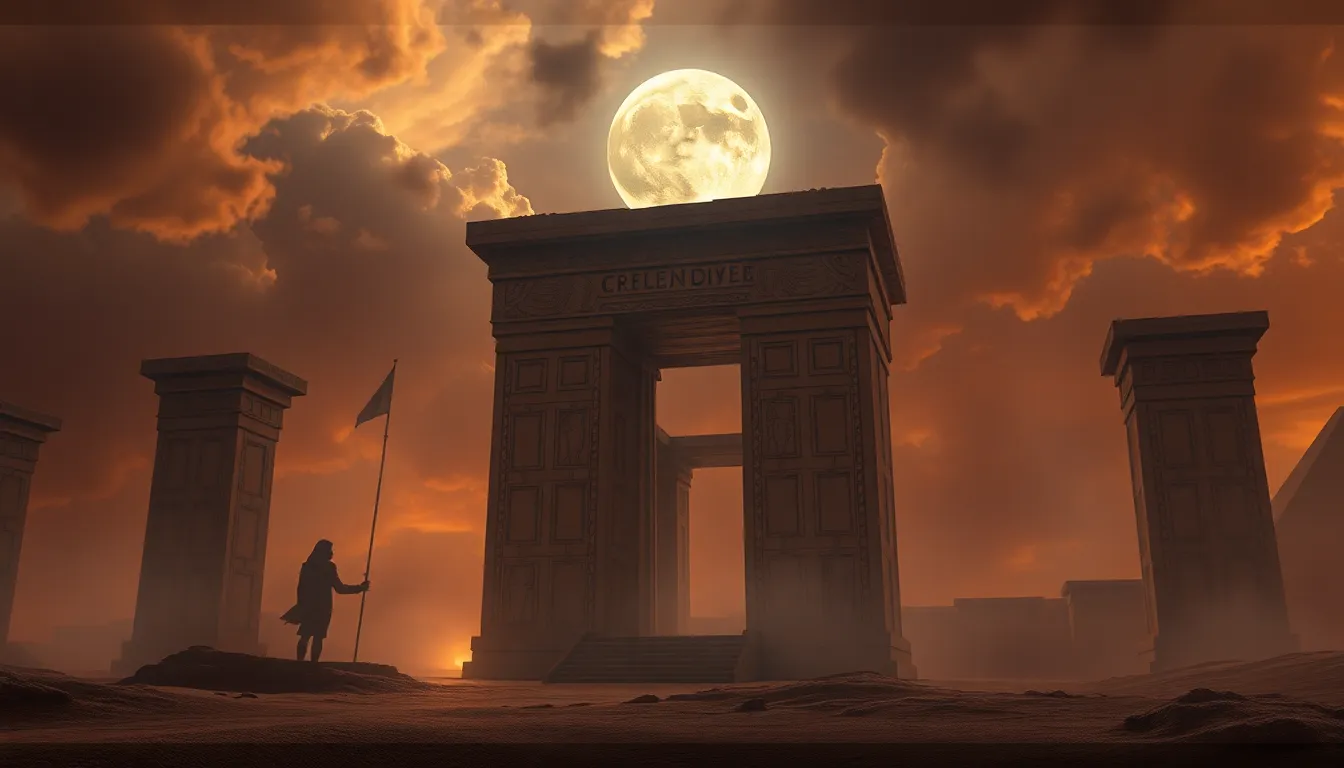1. Introduction
Finnish mythology, steeped in captivating tales and legends, holds a profound place in the fabric of Finnish culture. Its enchanting stories have shaped the national identity and continue to inspire generations. Central to Finnish mythology are themes of transformation and growth, mirroring the resilience and adaptability of the Finnish people throughout history. These narratives delve into the mystical realm of gods, heroes, and nature spirits, offering insights into the human experience and the enduring power of hope amidst adversity.
2. The Creation Myth: Väinämöinen and the Sampo
The origins of the world, according to Finnish mythology, lie in a captivating creation myth that centers around Väinämöinen, a wise and benevolent shaman. As Väinämöinen sailed across the primordial waters, he caught hold of the knee of a giant that emerged from the depths. Using his magical powers, he transformed the giant's knee into the earth, the sky, and the stars. The creation of the world was a collaborative effort, as Väinämöinen was joined by the blacksmith Ilmarinen, who forged the Sampo, a magical artifact that brought prosperity and fortune to its possessors. However, the Sampo's allure sparked a conflict between Väinämöinen and Louhi, the evil mistress of the underworld Pohjola, setting the stage for an epic struggle between good and evil.
3. Heroes and Transformations: Louhi and Lemminkäinen
Louhi, the wicked ruler of Pohjola, posed a constant threat to Väinämöinen and the people of Kalevala, the mythical land of the Finns. Her cunning and malevolent schemes were often thwarted by the heroic efforts of Lemminkäinen, a reckless but brave warrior known for his numerous transformations. In one tale, Louhi transformed Lemminkäinen into a wolf, but he cleverly escaped her grasp by transforming back into a human. Another time, he was turned into a bear, but once again, his wit and determination led him to overcome adversity. Lemminkäinen's adventures showcase the indomitable spirit of the Finnish people, who have faced countless challenges throughout their history.
4. The Kalevala: Epic Poetry and National Identity
The Kalevala, a majestic epic poem, holds a paramount position in Finnish culture, embodying the essence of the nation's mythology and folklore. It is a captivating tapestry woven from centuries of oral tradition, meticulously compiled by Elias Lönnrot in the 19th century. The Kalevala comprises a vast collection of songs, tales, and legends, recounting the exploits of heroes, the mystical powers of nature spirits, and the origins of the world. Its verses have instilled in the hearts of Finns a profound sense of national pride and identity. The Kalevala is a literary masterpiece that has shaped Finnish literature and continues to inspire contemporary Finnish art and culture.
5. Väinämöinen and Joukahainen
Väinämöinen's encounters with Joukahainen, a cunning and resourceful young suitor, reveal the interplay between wisdom, trickery, and the power of transformation. In one tale, Joukahainen attempts to outsmart Väinämöinen by challenging him to a singing contest. However, Väinämöinen's superior knowledge and
6. Heroes and Giants: Kullervo and Nyyrikki
Kullervo, a tragic hero destined for destruction, embodies the complexities of the human condition. His story unfolds as a chilling tale of revenge and transformation. Cursed from birth, Kullervo's life is marked by misfortune and sorrow. After being enslaved by his cruel master, he undergoes a horrifying transformation into a bear, symbolizing the destructive forces that can consume even the purest of souls. Nyyrikki, a formidable giant, represents the untamed wilderness of Finnish folklore. His immense stature and brute strength embody the primal forces of nature, both awe-inspiring and terrifying. Kullervo's encounter with Nyyrikki culminates in a heart-wrenching battle, showcasing the struggle between civilization and the untamed forces of nature.
7. Cosmic Themes: The Sky, the Sun, and the Moon
Finnish mythology is deeply entwined with the celestial bodies that govern the natural world. Ukko, the Sky God, wields his mighty thunderbolts, shaping the weather and instilling both awe and respect in the hearts of mortals. Päivättären, the Sun Goddess, brings warmth and light to the land, symbolizing growth, fertility, and vitality. Kuutar, the Moon Goddess, presides over the realm of dreams and intuition, influencing the tides and the rhythms of life. These cosmic deities play a pivotal role in Finnish mythology, embodying the interconnectedness of humanity with the natural world.
8. Nature Spirits and Transformation
Nature spirits, known as haltijas, hold a profound place in Finnish mythology, embodying the sacredness of the natural world. They inhabit forests, lakes, rivers, and mountains, possessing supernatural powers and a deep connection to the land. These spirits can be mischievous, benevolent, or even malevolent, reflecting the multifaceted nature of the environment. In Finnish folklore, humans and nature spirits often interact, with transformations being a common occurrence. People can transform into animals, trees, or other natural elements, blurring the boundaries between the human and natural realms.
9. Mythical Creatures and Magical Objects
Finnish mythology is a treasure trove of fascinating mythical creatures and magical objects. The fiery phoenix, known as the Tuulikki, symbolizes rebirth and renewal, inspiring awe and wonder. The mischievous Väinämöinen, a cunning trickster, possesses a magical harp that can charm animals and humans alike. The Sampo, a magical artifact, was crafted by the blacksmith Ilmarinen and was said to bring prosperity and abundance. These legendary creatures and objects embody the boundless imagination and creativity of Finnish mythology, inviting us to delve into a world of wonder and enchantment.
10. Legacy and Cultural Significance
Finnish mythology continues to captivate and inspire contemporary Finnish culture, permeating literature, art, music, and film. The epic poem, the Kalevala, remains a beloved literary masterpiece, preserving the ancient stories and traditions of the Finnish people. Modern interpretations of Finnish mythology blend ancient themes with contemporary issues, showcasing the enduring relevance of these timeless tales. The legacy of Finnish mythology extends beyond its own borders, captivating audiences worldwide with its themes of transformation, growth, and the interconnectedness of humanity and nature.
FAQ
Q: What is the significance of transformation in Finnish mythology?
A: Transformation is a central theme in Finnish mythology, symbolizing the resilience and adaptability of the Finnish people. It represents the ability to overcome adversity, find renewal, and navigate the complexities of life.
Q: What are some of the most prominent figures in Finnish mythology?
A: Väinämöinen, the wise shaman; Louhi, the evil mistress of Pohjola; and Lemminkäinen, the reckless hero, are among the most well-known figures in Finnish mythology.
Q: What is the cultural significance of the Kalevala?
A: The Kalevala is a pivotal piece of Finnish literature that has played a significant role in shaping the national identity. It has inspired countless works of art, music, and film, and remains a cherished cultural treasure.



